In late 1800’s as part of the Borneo Company headquarters, 137 Pillars House is a beautiful teak wood building that has been carefully restored to reflect its 19th-century origins. For the current owners of the historic 137 Pillars House, the story began when they sought a brief but peaceful respite away from the frenetic Thai capital. With its laid-back pace, the northern town of Chiang Mai became the obvious choice. In Chiang Mai, the importance and wealth of a property owner was often measured by the size of their Lanna-style Thai houses, and in particular how many pillars (sao) the house had… the more the pillars, the more important you were. Impressed by the history and beauty of the house, visitors and journalists were always curious as to why the Borneo house did not have a name. So when a publisher wanted to write about “the house with the most number of pillars”, Jack Bain, the owner at the time, decided to count the number of pillars which numbered 137. An old map of the Wat Gate area also referred to house as “Baan 137 Sao”, which translates to 137 Pillars House. Thus the house came to be known as 137 Pillars House.
137 Pillars House Suites are havens of tranquility with every imaginable convenience — large terraces with expansive daybeds and our signature planters rattan rocking chairs – high ceilings with large super king size beds, en suite dressing room with walk-in closet and views to the tropical gardens. Large bathrooms with separate indoor /outdoor garden showers, and Victorian baths make these suites unique in every sense.
RAJAH BROOKE SUITES
These spacious one bed king bedroom suites each extend to an airy vintage tiled verandah overlooking tropical gardens with cane shades for privacy, rattan planter’s chair and plush day bed. Beyond a large walk-in closet, the en-suite bathroom with dual washbasins includes a free standing Victorian bath tub, separate indoor and outdoor garden showers.
EAST BORNEO SUITES
Each super king bed or twin bedded suite extends to an airy vintage tiled veranda overlooking tropical gardens with cane shades for privacy, rattan planter’s chair and plush day bed. Beyond a large walk-in closet, the en-suite bathroom with dual washbasins includes a free standing Victorian bath tub, separate indoor and outdoor garden showers.
D.F. MACFIE SUITES
These suites provide a luxurious haven and spacious living area for a family of up to four or a couple wanting additional airconditioned living space with an al fresco conservatory. The adjoining spacious tropical vintage-tiled conservatories have the option of being enclosed and air conditioned, or open-air and are furnished with a plush daybed that can be made up in the evenings, rattan planter’s rocking chairs and cane shades for privacy.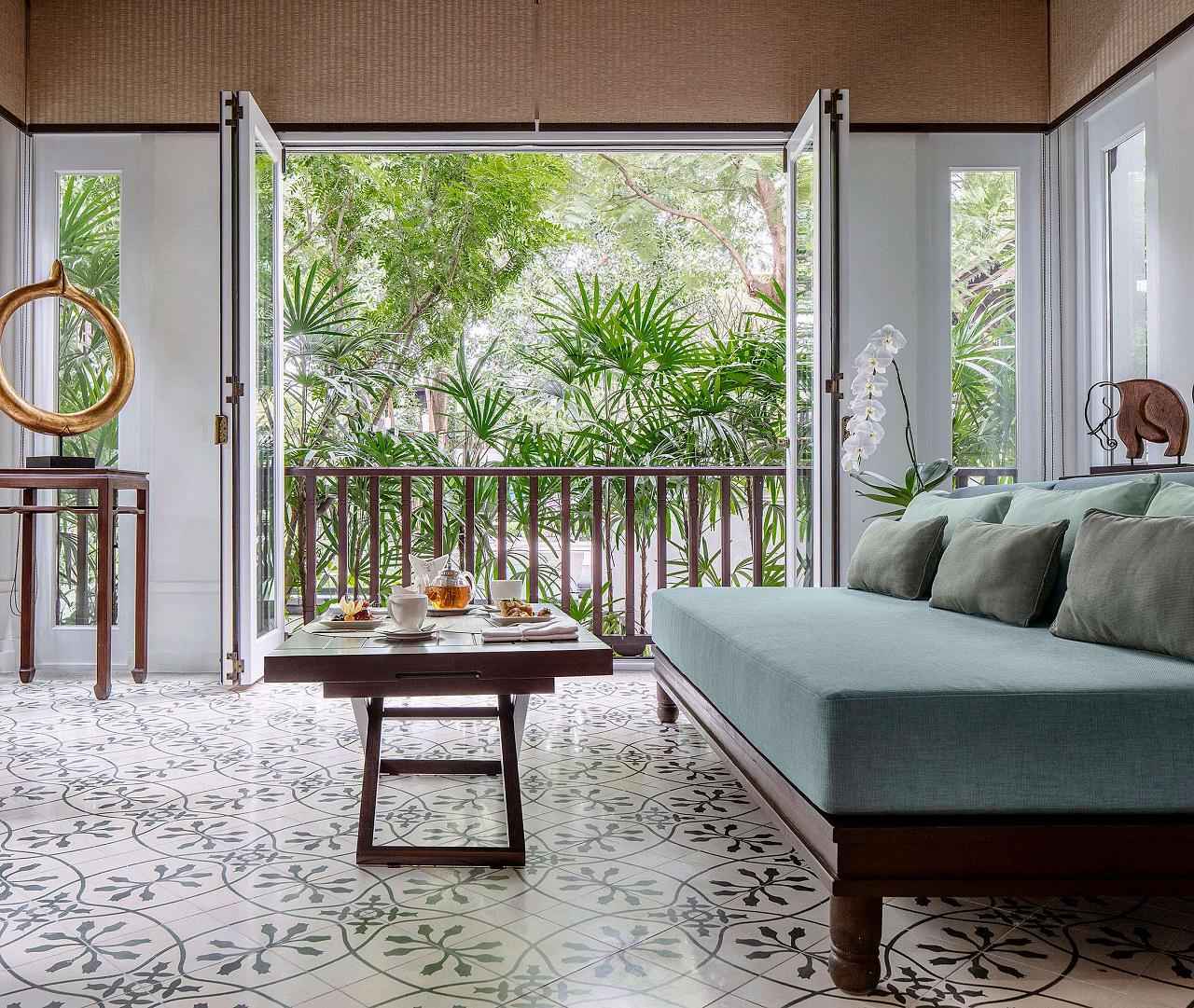
WILLIAM BAIN TERRACE SUITES
Overlooking the historical homestead, infinity pool and feature garden wall from the upper floor, both super king bedroom suites extend to a generous living room and airy vintage tiled verandah overlooking tropical gardens with cane shades for privacy, rattan planter’s chair and plush day bed.
LOUIS LEONOWENS POOL SUITES
Our two top-tier incredibly spacious ground floor suites include generous living rooms and super king bedrooms with French doors overlooking the infinity pool, feature garden wall and historic homstead. Beyond a large walk-in closet, the en-suite bathroom with dual washbasins includes a sunken bath overlooking tropical foliage as well as separate indoor and outdoor garden showers and a private 5.5 × 2.5 metre swimming pool.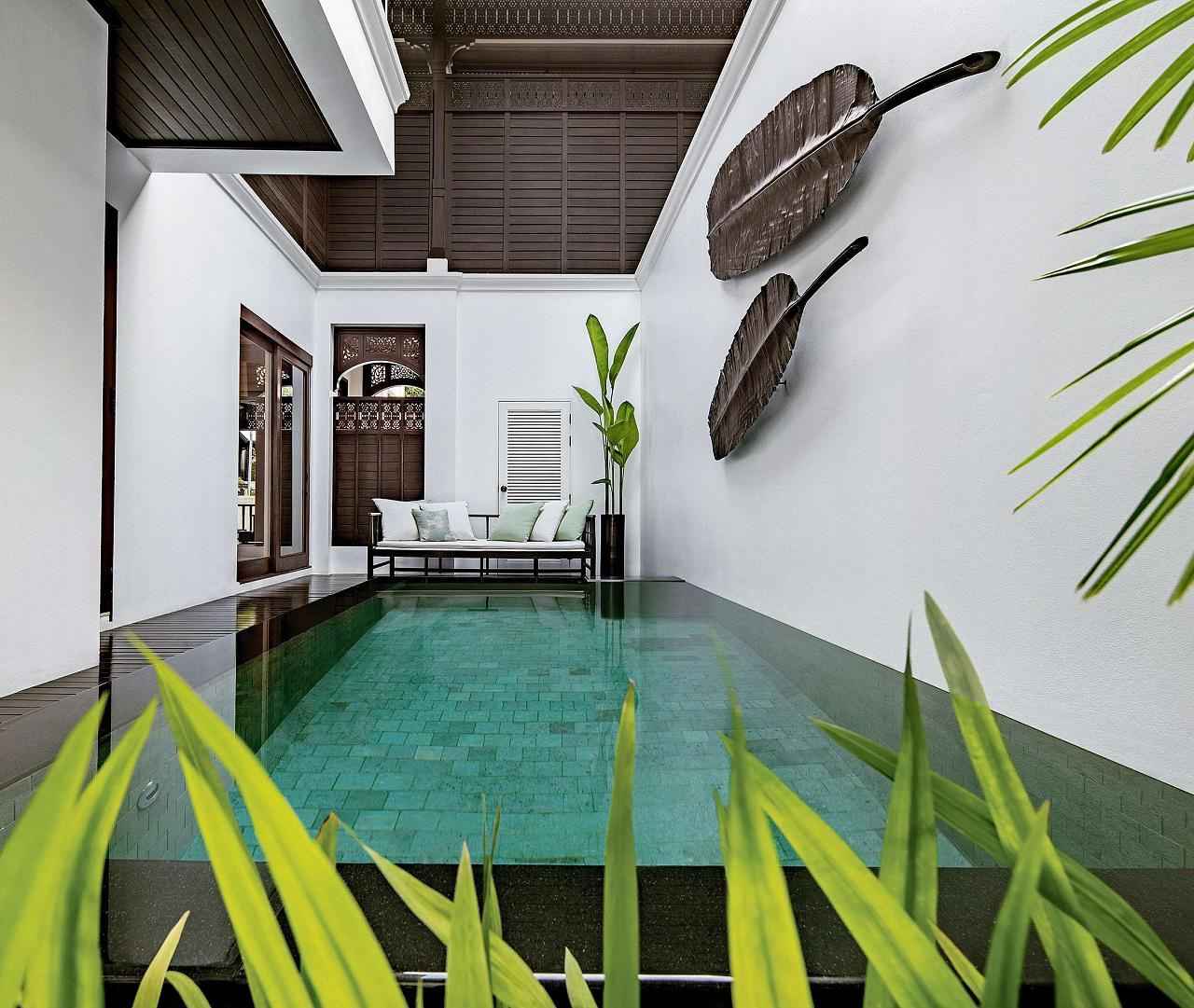
Historical Tours
A fascinating day tour highlighting historical buildings between Chiang Mai and Lampang with a rich colonial history from a bygone era. Seven hundred km northwest of Bangkok and just over 300 metres above sea level, Chiang Mai sits along the Mae Ping River, a tributary of the Chao Praya River that flows through Bangkok. Chiang Mai, meaning “new city” in Thai, was founded by King Mangrai in 1296, succeeding Chiang Rai as the capital of the Lanna Kingdom, or literally “Kingdom of a Million Fields.”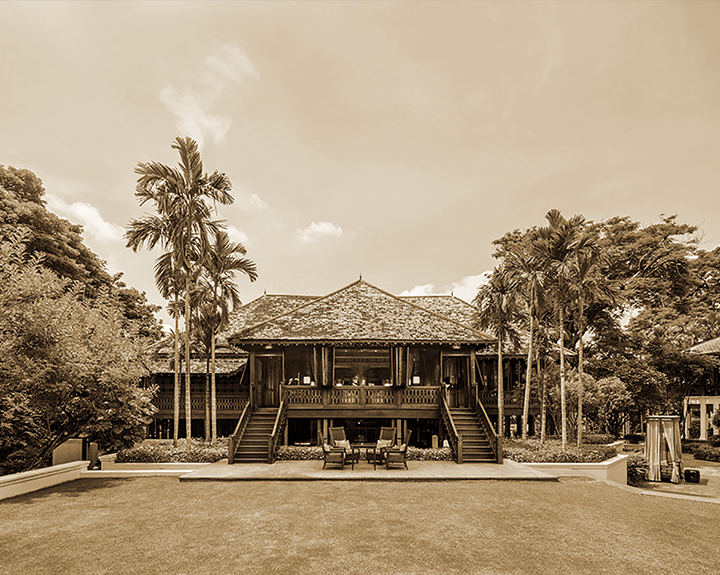
Lanna was a prosperous trading centre on the route from Yunnan in the south of China to the Burmese coast and the Gulf of Martaban. The Kingdom was also renowned for its scholars and craftsmen. A city wall was built to protect it from invading Burmese who nonetheless managed to occupy the royal capital in 1558. Chiang Mai formally became part of the Thai Kingdom in 1774 when King Taksin captured this prize back from the Burmese. As the unofficial capital of the north of Thailand, Chiang Mai remains a close second in national importance to Bangkok.
Lanna Folk Museum
The unassuming exterior of the old colonial-style Provincial Court from 1935, which houses the Lanna Folk Museum, does not lead on to the history-packed scenes of traditional Lanna life inside. As the brainchild of the Chiang Mai Municipality Mayor, the museum aims to revive Lanna culture and educate visitors about the North’s distinctive culture and history through the recreation of a traditional Lanna village. Eighteen different exhibits give visitors a taste of life of Chiang Mai’s yesteryears with life-size dioramas of everything from wax dolls performing fon lep, a mystical Lanna dance, to intricate elements of Lanna-style monasteries. Guests are allowed to pose with the figures or try their hand at traditional silk weaving -- you can even get familiar with local ingredients. It’s the perfect prelude for a day of temple-hopping in the history-rich city.
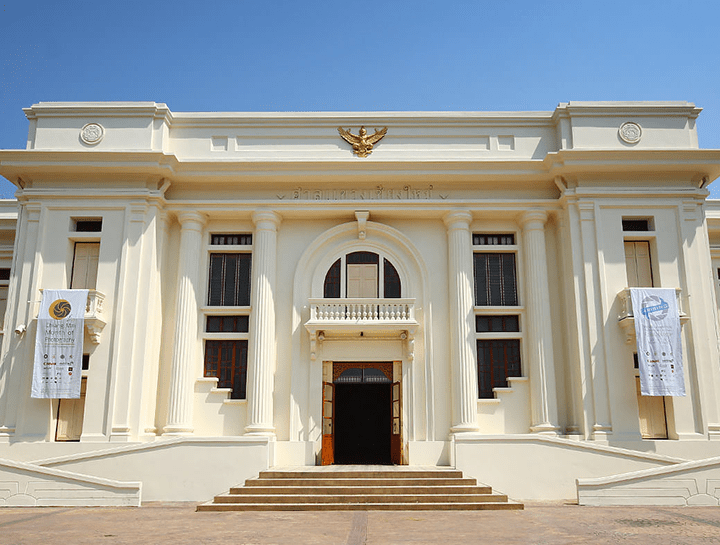
MAIIAM Contemporary Art Museum
When MAIIAM Contemporary Art Museum opened a few years ago, the creative community around not just Chiang Mai but all of Thailand rejoiced. The space showcases culturally powerful Thai modern art in a sophisticated minimalist house-turned warehouse with a striking reflective exterior 20 minutes outside of downtown Chiang Mai. Inside the two-storey space is a mix of rotating and permanent exhibits from the personal collections of Jean Michel Beurdeley and his late wife Patsri Bunnag together with their son Eric Bunnag Booth, who is also the managing director at Jim Thompson. The collection includes works from some of the country’s most respected contemporary artists like Kamin Lertchaiprasert and the late Montien Boonma. The thought-provoking, innovative works of the 3,000-square-metre museum have helped cement Chiang Mai as an international arts destination. In 2017, MAIIAM became the first museum in Thailand to win the Best New Museum of Asia Pacific Award.
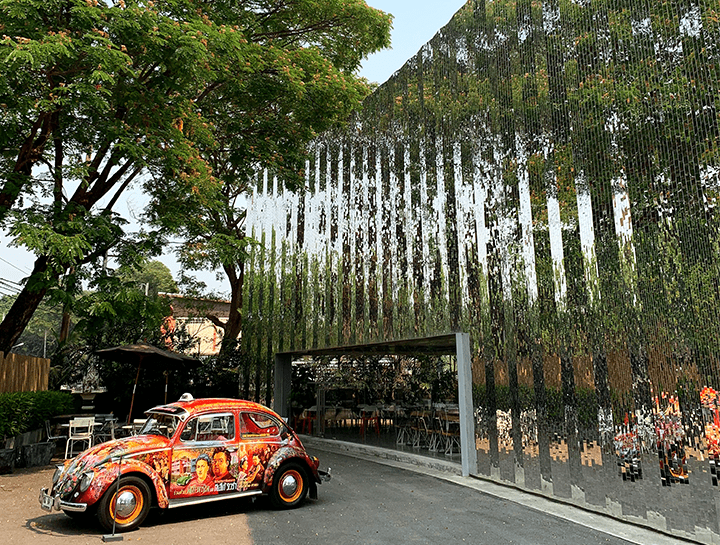
Shopping - Golden Triangle Hang Dong
Though Golden Triangle is in Hang Dong, around 40 minutes outside the city, the open-air galleries of the two-hectare store sticks to Chiang Mai’s artistic, rustic narrative with its shady arcades and impressive collection of antiques from around Asia. Originally established in 1995 as the refinishing workshop for The Golden Triangle store in Chicago, the Chiang Mai outlet has since grown into Chiang Mai’s largest single source for fine antique furniture. The cluster of buildings that are arranged around the courtyard house museum-worthy benches and intricately carved wooden chests along with a vast collection of pieces not just from Thailand but Pakistan, China, Myanmar, and Central Europe as well. They also specialise in excellent reproductions, that are marked and sold as such. It’s easy to while away an afternoon strolling through the space’s tree-shaded pathways and pieces that provide both history and aesthetic satisfaction.